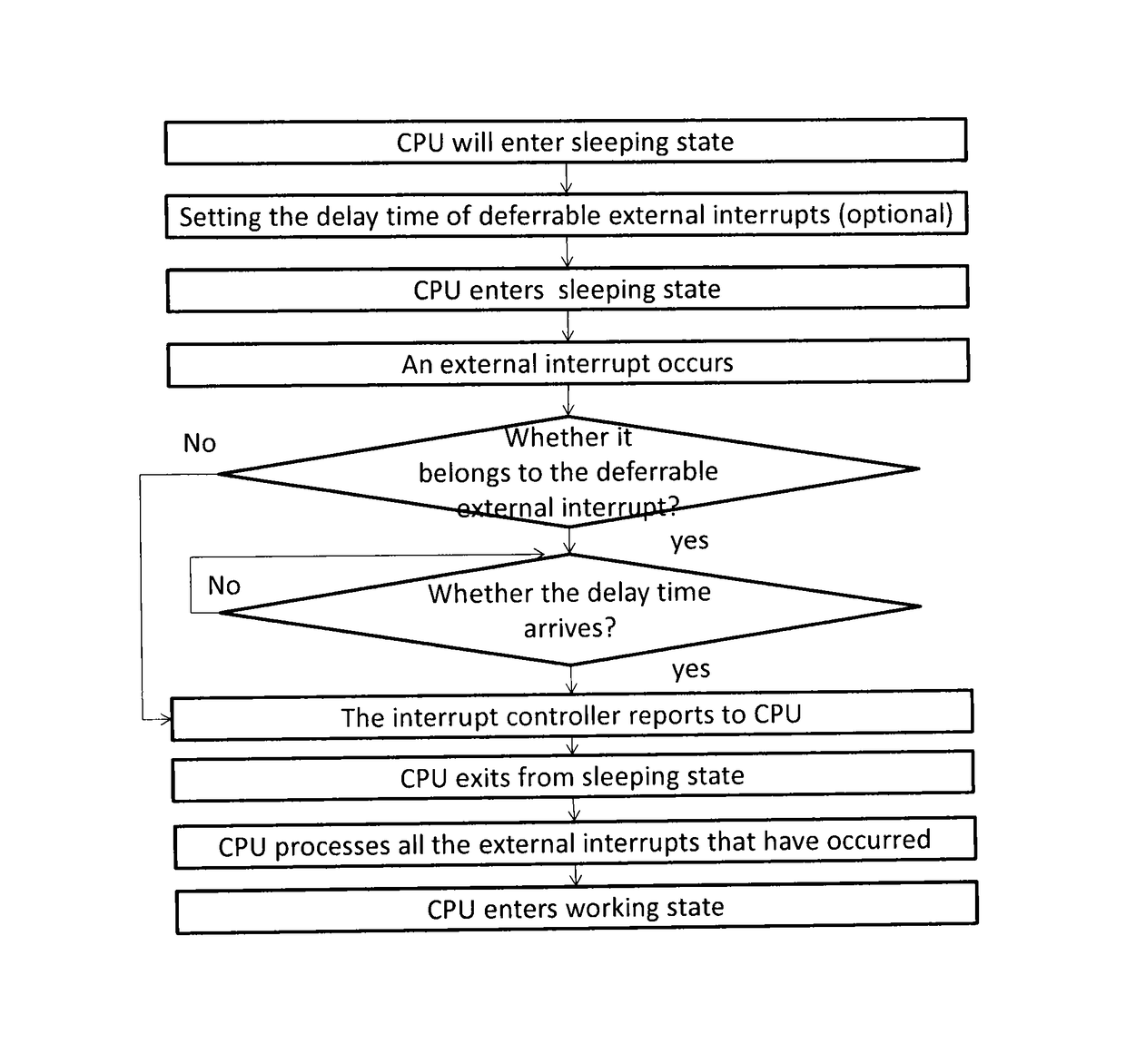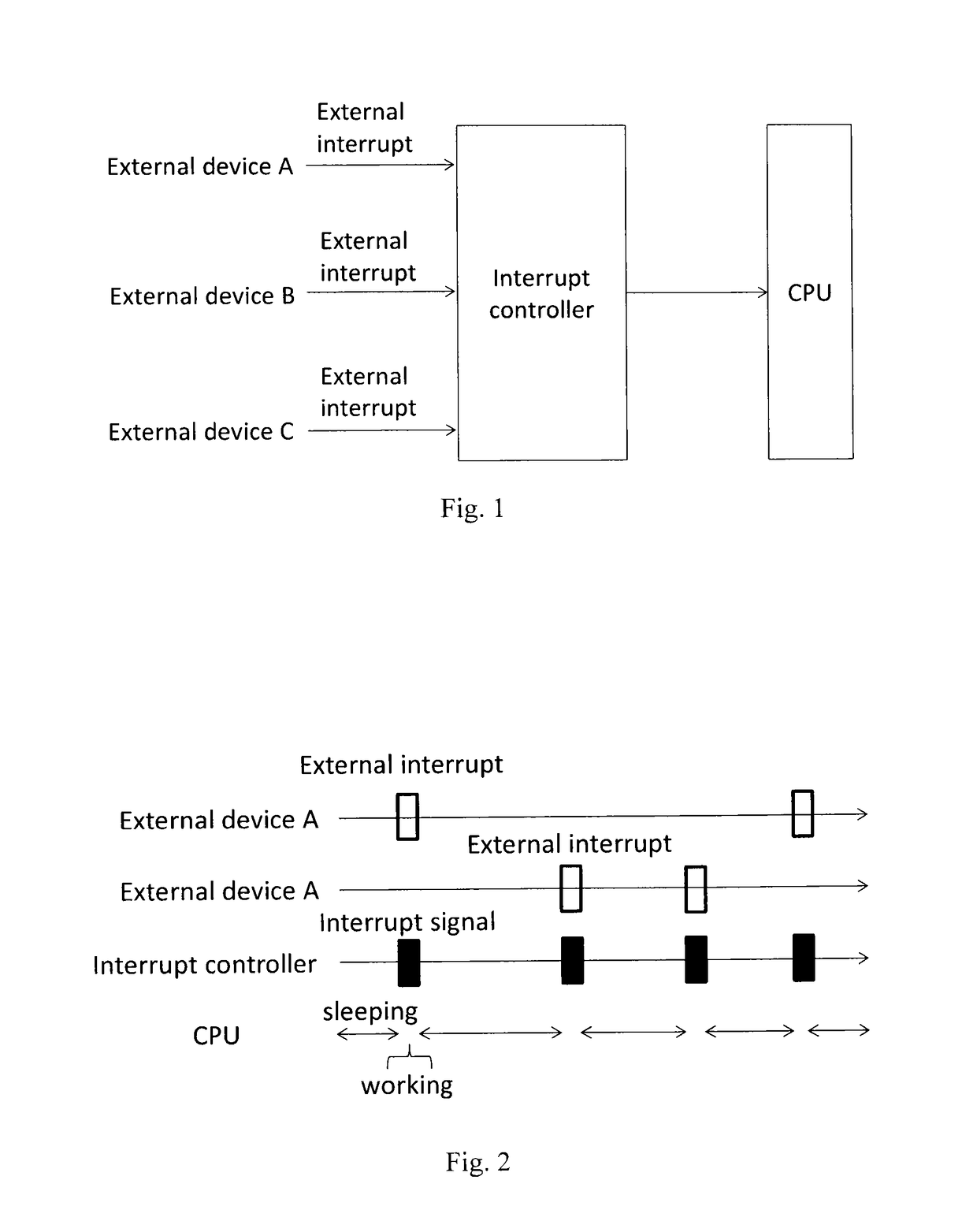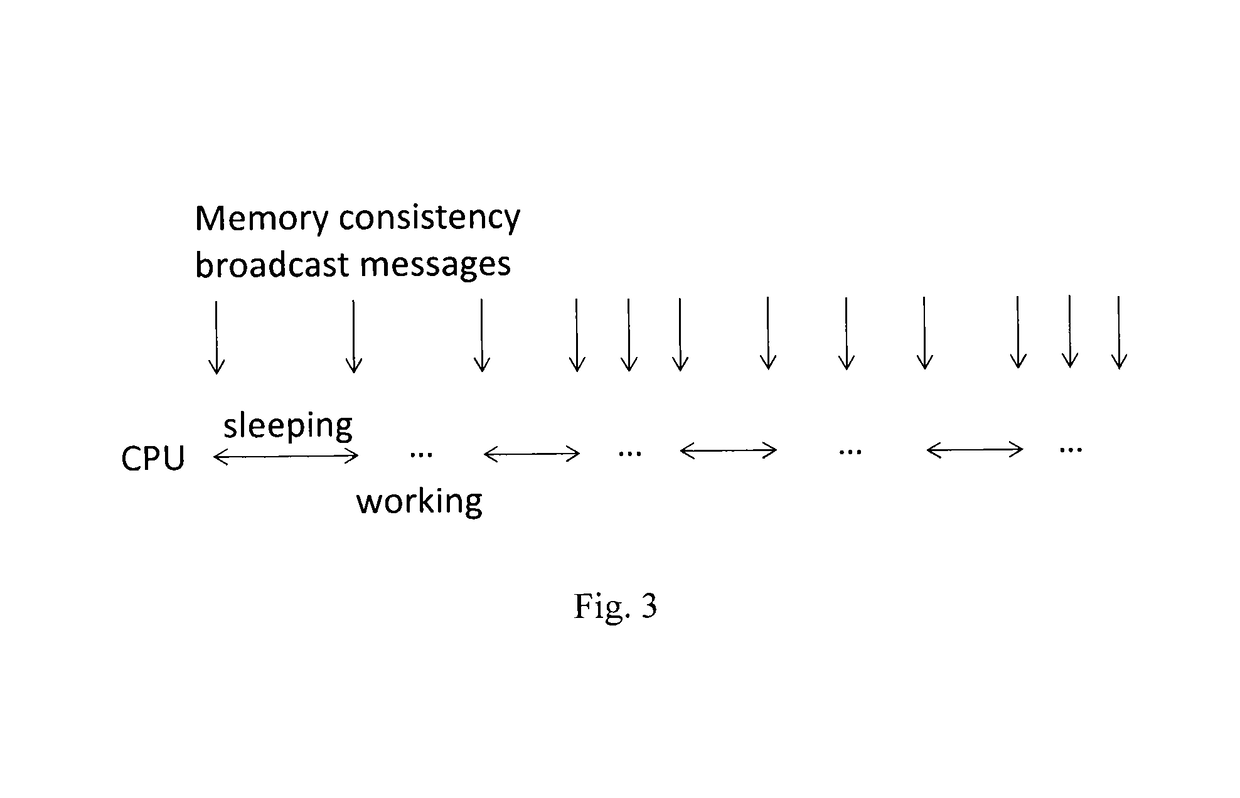Method and device for prolonging sleeping time of CPU
a technology of cpu and sleeping mode, which is applied in the direction of sustainable buildings, high-level techniques, instruments, etc., can solve the problems of cpu difficulty in entering a deep sleeping mode, and achieve the effect of prolonging the sleeping time of cpu, reducing energy consumption, and avoiding affecting system performan
- Summary
- Abstract
- Description
- Claims
- Application Information
AI Technical Summary
Benefits of technology
Problems solved by technology
Method used
Image
Examples
first embodiment
[0053]the method for prolonging the sleeping time of CPU of this application is as shown in FIG. 4, comprising the following steps:
[0054]Step 4.1: The CPU enters sleeping state. If there is an external interrupt here, the interrupt controller will first distinguish its type. If the received external interrupt is deferrable, the interrupt controller will start delay time that has been set, and proceed to Step 4.2 when the delay time finishes. If the received external interrupt is of other types, the interrupt controller will proceed directly to Step 4.2.
[0055]Step 4.2: When the delay time of any deferrable external interrupt finishes, or when the interrupt controller receives an external interrupt of other types, the interrupt controller reports it immediately to the CPU, and then the CPU exits from sleeping state.
[0056]Step 4.3: The CPU traverses the interrupt controller, and deals one by one with all the external interrupts that have occurred according to the priority level or the ...
second embodiment
[0070]FIG. 5 show the method for prolonging the sleeping time of CPU of this application, which is applicable to an intelligent electronic device provided with the SMP system. The method comprises the following steps:
[0071]Step 5.1: A CPU, prior to entering sleeping state, stops receiving the memory coherency broadcast messages from other CPUs.
[0072]Step 5.2: The CPU enters sleeping state, and will not receive the memory coherency broadcast messages from other CPUs.
[0073]Step 5.3: The CPU, after exiting from sleeping state, resumes receiving the memory consistency broadcast messages from other CPUs.
[0074]Step 5.4: The CPU enters working state.
[0075]Optionally, in Step 5.1 of the method, a CPU also saves the contents of its own cache into a main memory (e.g. a RAM) prior to entering the sleeping state. This is because the contents of the cache of the CPU may be modified later than the corresponding contents in the main memory, and thus it is necessary to update the main memory accord...
third embodiment
[0079]FIG. 6 shows the method for prolonging the sleeping time of CPU of this invention, which is applicable to an intelligent electronic device provided with the SMP system. The method comprises the following steps:
[0080]Step 6.1: A CPU, prior to entering sleeping state, stops receiving the memory coherency broadcast messages from other CPUs. This CPU also sets delay time of each of the deferrable external interrupts in the interrupt controller. If the delay time of each of the deferrable external interrupts has been set as default in the interrupt controller, this operation shall be omitted.
[0081]Step 6.2: The CPU enters sleeping state, and will not receive the memory coherency broadcast messages from other CPUs. If there is an external interrupt here, the interrupt controller will first distinguish its type. If the received external interrupt is deferrable, the interrupt controller will start the delay time that has been set, and proceed to Step 6.3 when the delay time finishes. ...
PUM
 Login to View More
Login to View More Abstract
Description
Claims
Application Information
 Login to View More
Login to View More - R&D
- Intellectual Property
- Life Sciences
- Materials
- Tech Scout
- Unparalleled Data Quality
- Higher Quality Content
- 60% Fewer Hallucinations
Browse by: Latest US Patents, China's latest patents, Technical Efficacy Thesaurus, Application Domain, Technology Topic, Popular Technical Reports.
© 2025 PatSnap. All rights reserved.Legal|Privacy policy|Modern Slavery Act Transparency Statement|Sitemap|About US| Contact US: help@patsnap.com



